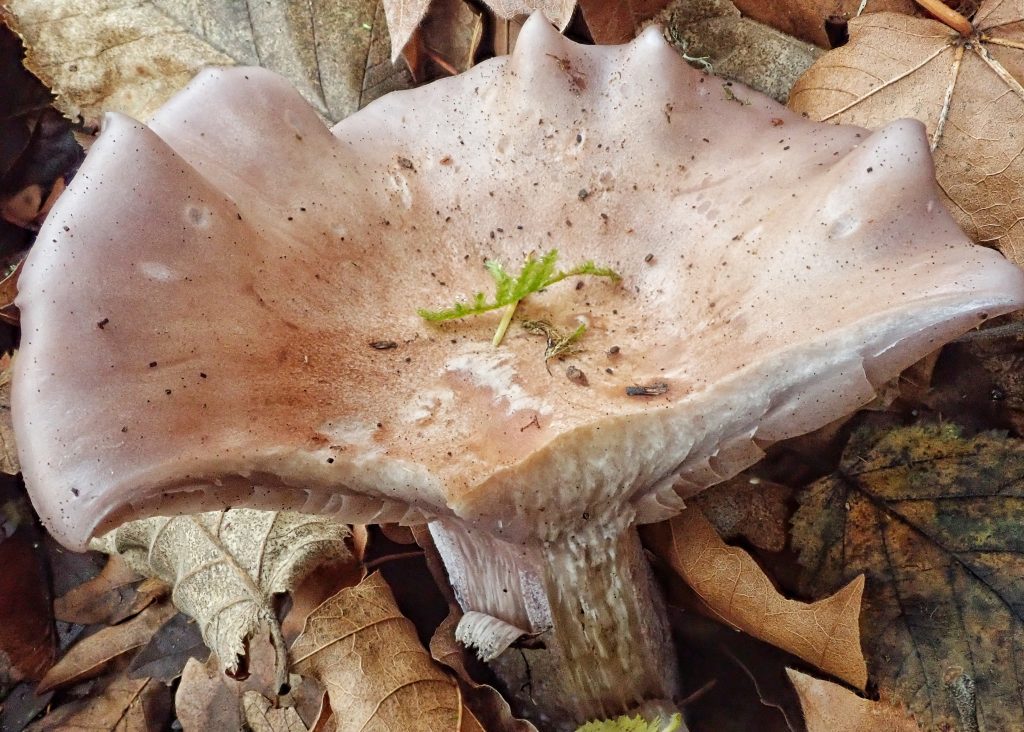
The nomenclature for this basidiomycete mushroom is in a bit of flux. The sources I consulted consider Lepista and Clitocybe to both be valid generic names, and it has flip flopped between the two. But the molecular taxonomists seem to be leaning towards Lepista, so that is what I gave priority. It is colloquially called a blewit (from ‘blue hat’) or a woods blewit.
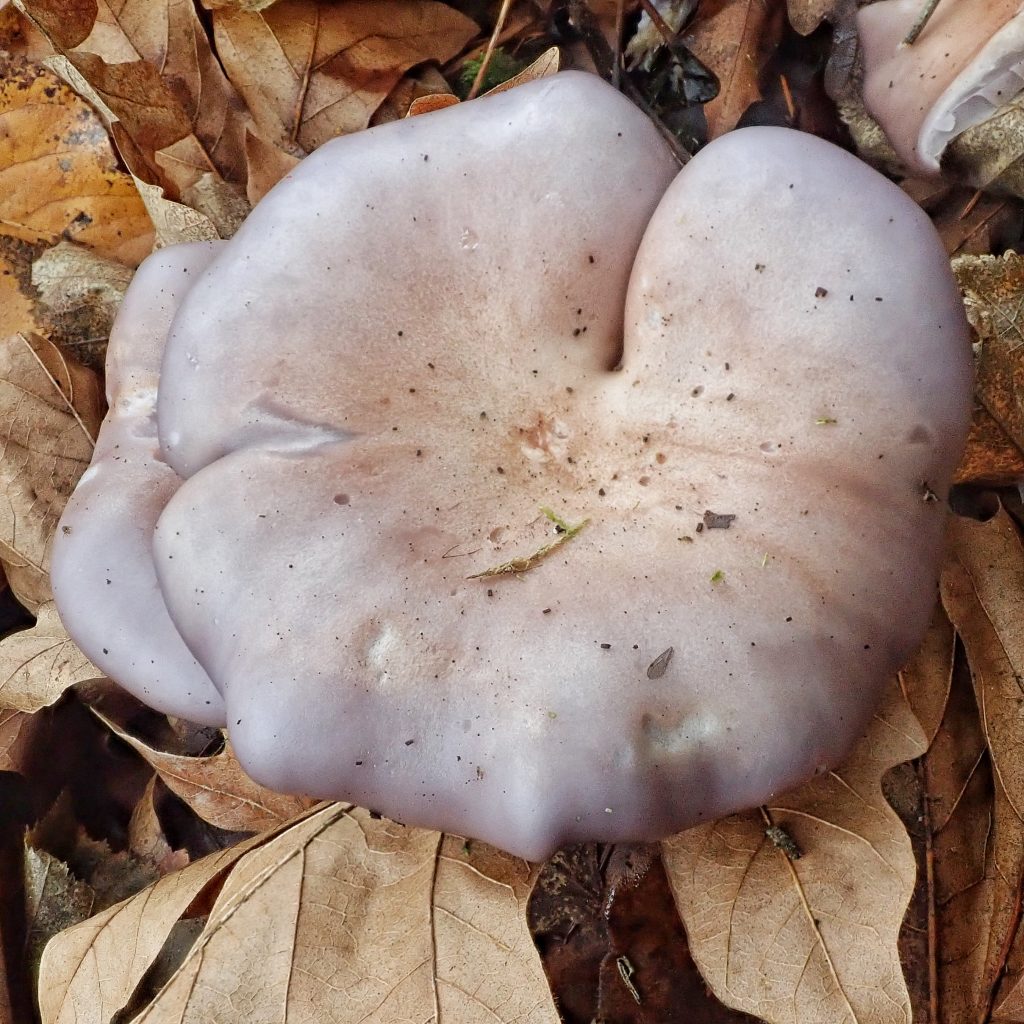
It’s always fun to find sizable groups of large mushrooms. These older specimens were along a fairly straight line about 10’ long in a patch of red alder on the shoreline of a small, low elevation lake, and were probably atop a soil covered and decomposing log. I found a few dozen springtails from the order Poduromorpha roaming the gills of these specimens, and I assume they were either eating spores or flesh or both. But they were tucked up in there, and I didn’t see them until I flopped down the specimen next to my microscope and jarred several loose. I hope to identify and profile them soon! This is apparently not unusual among fungi, but I thought it was interesting that Lepista nuda has been documented as sending out hyphae to penetrate bacterial colonies to kill them and absorb their nutrients.
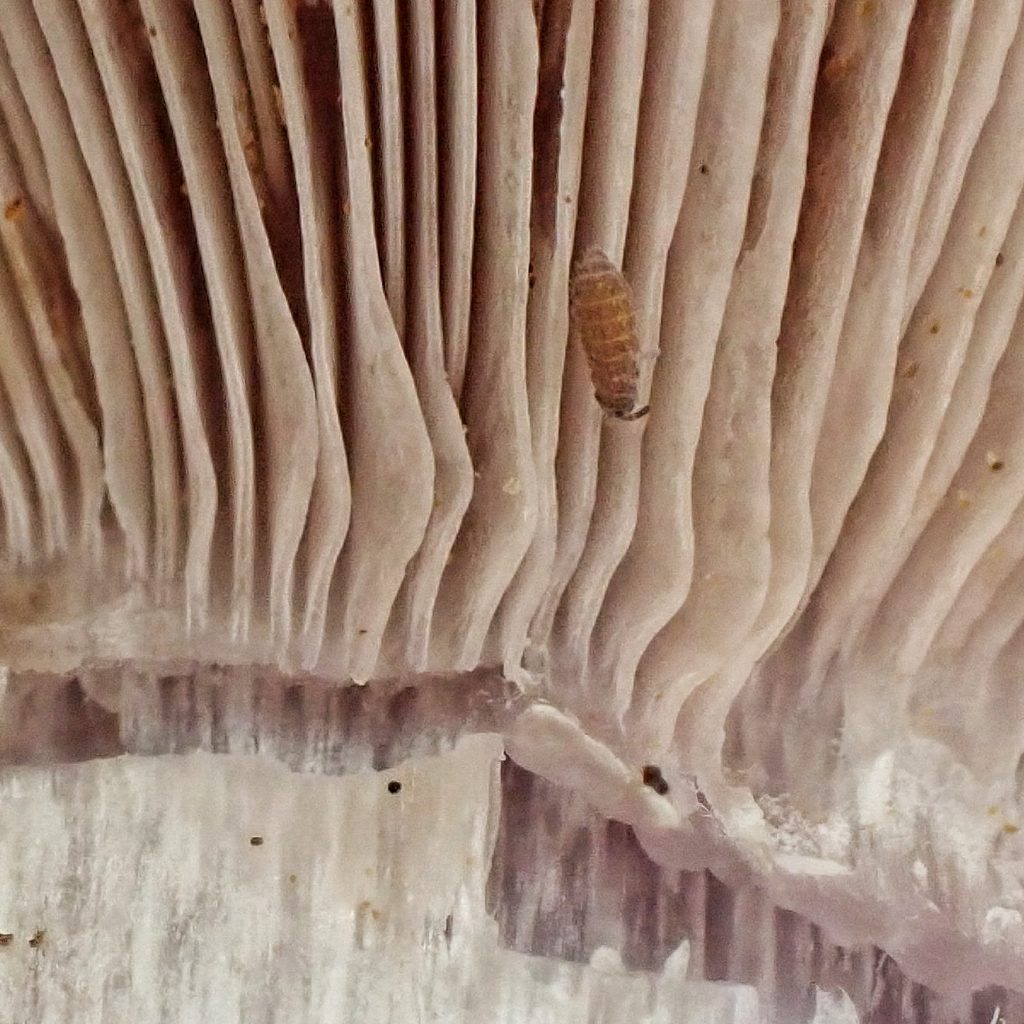
Woods blewits are considered to be an edible mushroom, although, as a non-fungivore, I cannot vouch for their taste. They contain a sugar, trehalose, that causes gastric problems for some people. They also contain high levels of antioxidants with free radical scavenging capabilities, meaning it could be useful in preventing diabetes, some heart disease, and the formation of cancerous cells. And an extract of this mushroom has been shown to inhibit microbial growth, and is being explored as a natural food preservative.
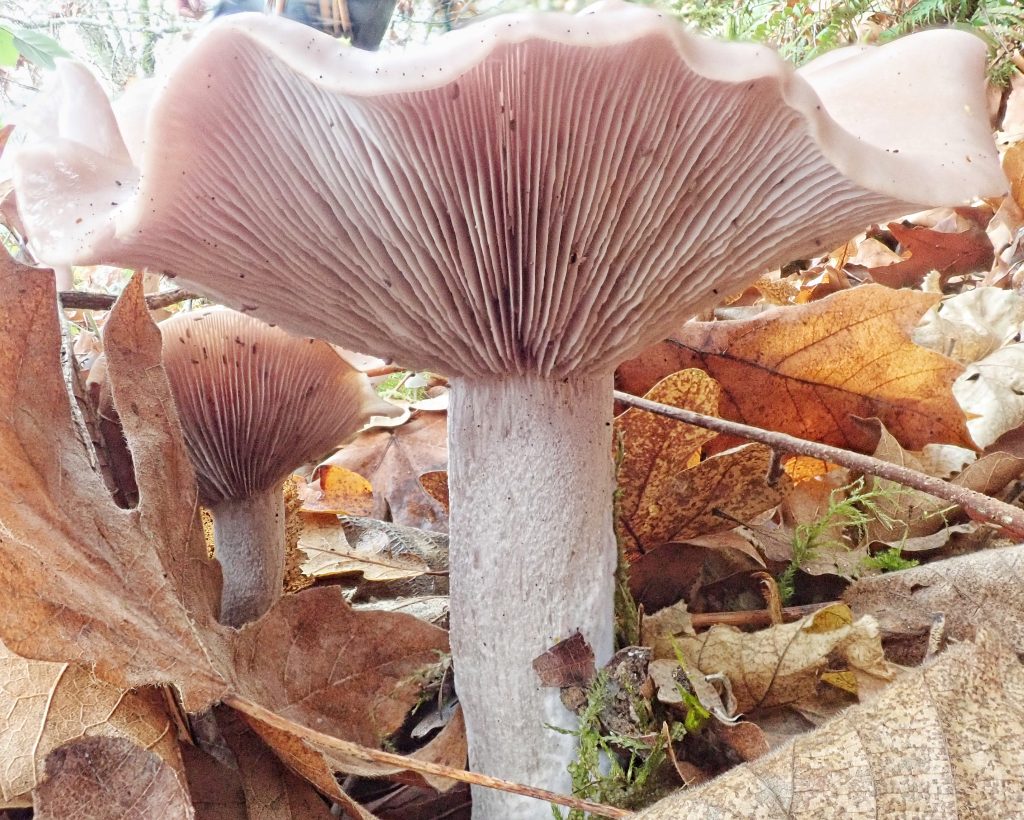
Standard fungal disclaimer- the descriptive and similar species information is for recreational identification of mushrooms. If you are thinking of eating it- Do your own research. Buy some books. Do a spore print. Maybe buy a microscope. Make sure that what you are eating is safe to consume. Wild mushrooms should always be cooked, to kill any organisms living on or in them, and to adulterate some toxins which can be rendered harmless by heat. It is a good idea to only eat a small amount of any mushroom your body is not familiar with.
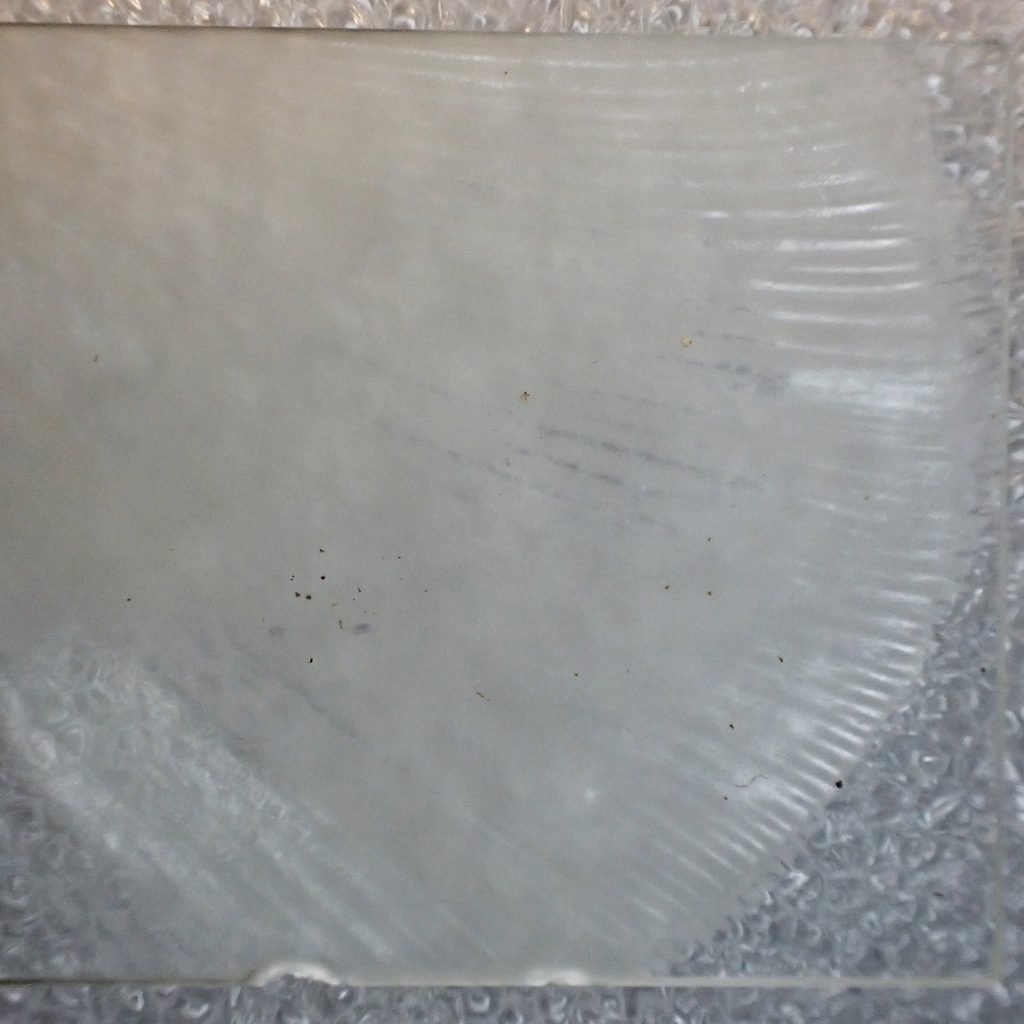
Description-Large (cap may be up to 6” in diameter and the stipe may be up to 4” tall) mushroom with a blue to purplish, convex cap with unrolled margins when young, becoming brownish with lilac tints, and flat to concave with wavy margins, as it ages; cap is smooth to cracked, but never slimy; narrow, tightly spaced, purplish gills attach directly to the stipe; stipe is smooth except for light scurfing near the top, fibrous, bluish, purplish, or brownish, usually with shades of all three; spore print light pink to pinkish beige; spores are warty and elongate, 3.5-5μm wide by 5.5-8μm long; said to smell like frozen orange juice, but I can’t attest to that.
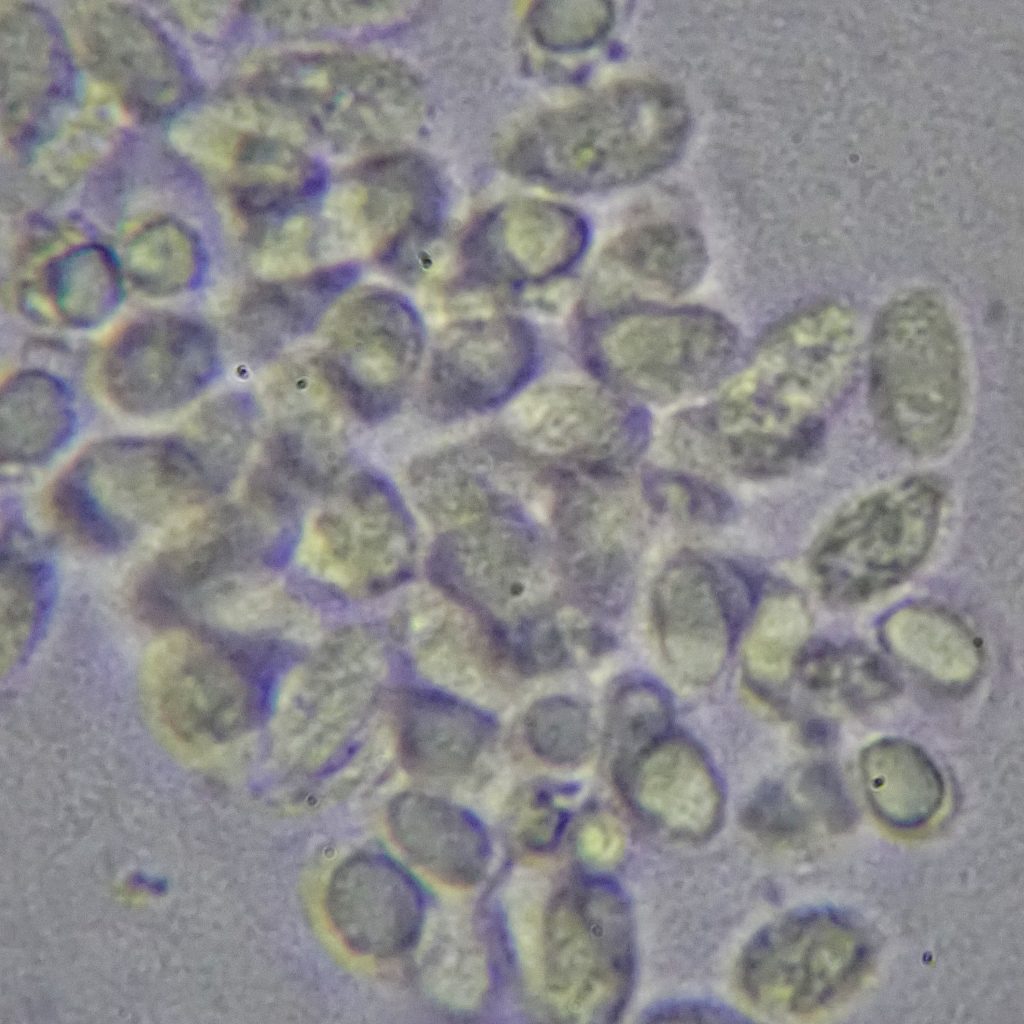
Similar species–Clitocybe brunneocephala is shorter and stockier, and doesn’t have violet tones; other Clitocybe and Lepista are either much smaller or lack blue to purple tones; Laccaria sp. have thicker gills of varying lengths that are not as close together; Cortinarius sp. have reddish brown spore sprint and cobwebby fibers where the stipe meets the cap.
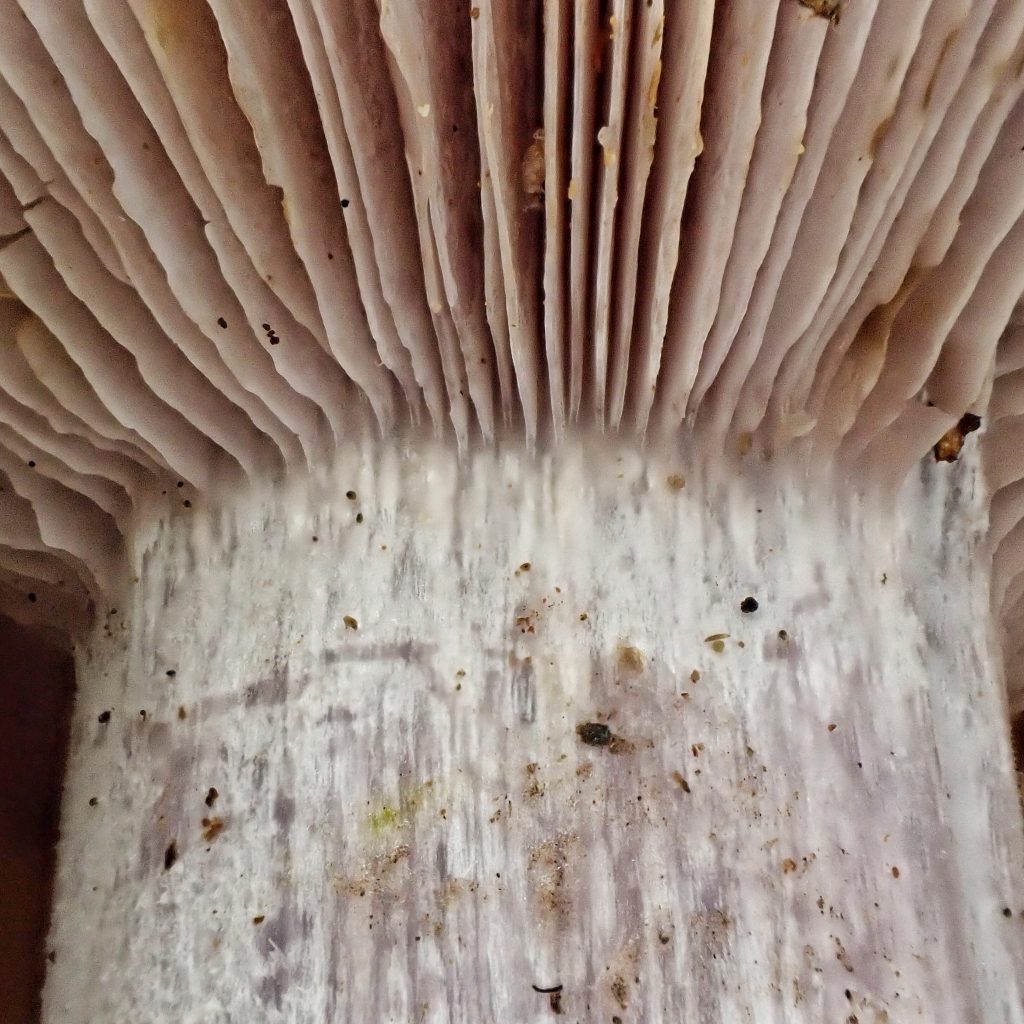
Habitat-Conifer, deciduous, and mixed forests and woodlands; also in urban settings with decaying wood detritus, although it doesn’t grow on logs.
Range-Holarctic; probably region wide in appropriate habitat.
Reproductive timing-Doesn’t fruit until after the first frost, but may produce from fall through spring.
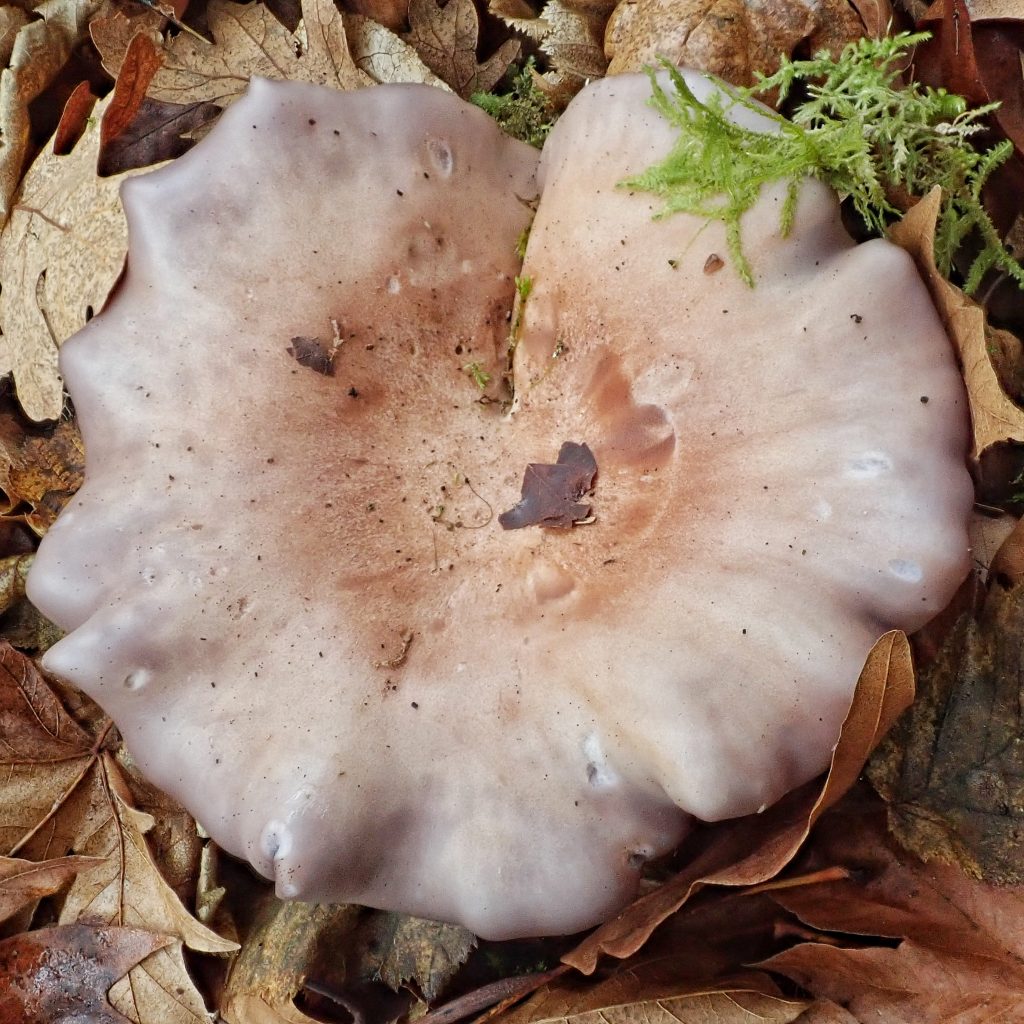
Eaten by-As noted above they are eaten by springtails in the order Entomobryomorpha, as well as many other collembolans; probably also consumed by slugs, snails, and some beetles in the families Leiodidae, Staphylinidae, Endomychidae, Tenebrionidae, and Erotylidae amongst others; probably larvae of flies in Mycetophilidae and Phoridae; and small mammalian herbivores.
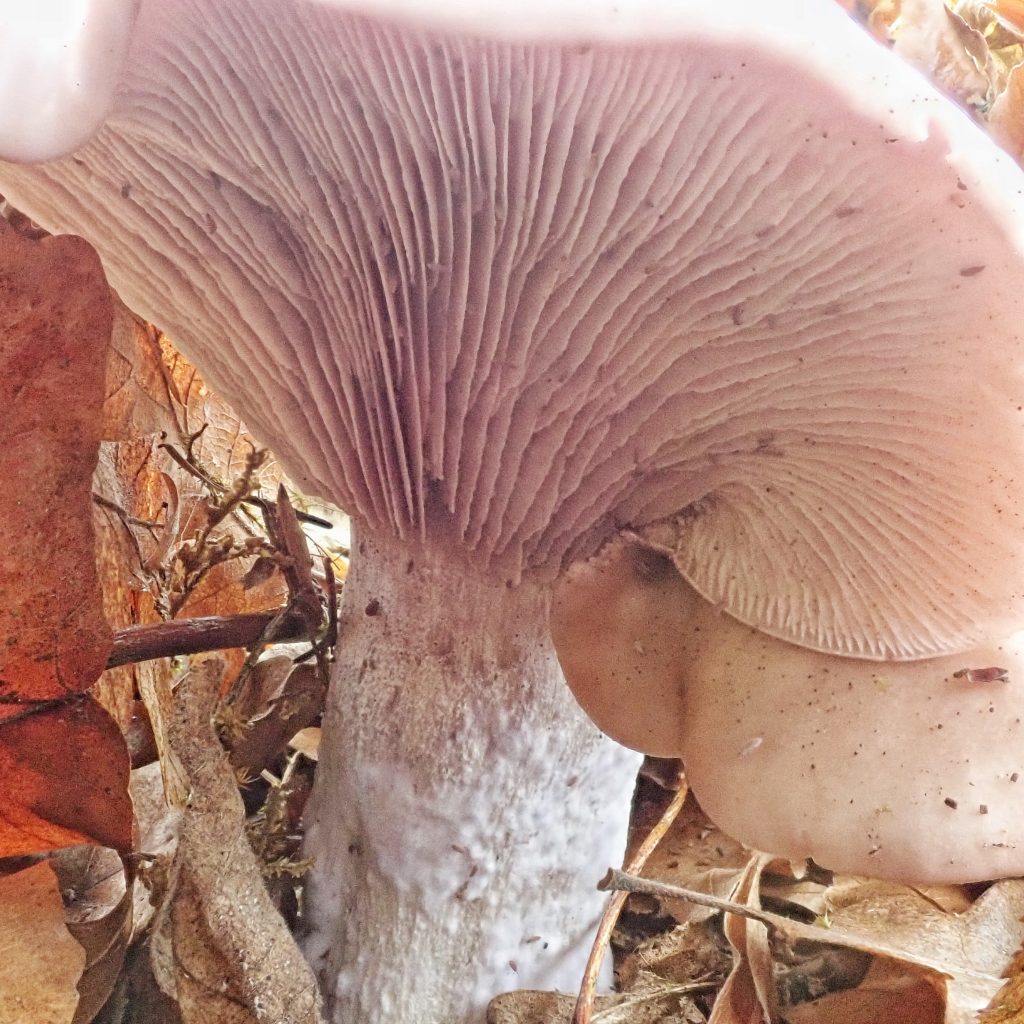
Etymology of names–Lepista is from the Latin word for ‘goblet’, and refers to the uplifting of the margins in older specimens, which produces a shallow basin; the specific epithet nuda is from the Latin word for ‘naked’ and probably refers to the smooth, dry cap. Clitocybe is from the Greek words for ‘hillside’ and ‘head’, and possibly refers to them being a fungi of the slopes.
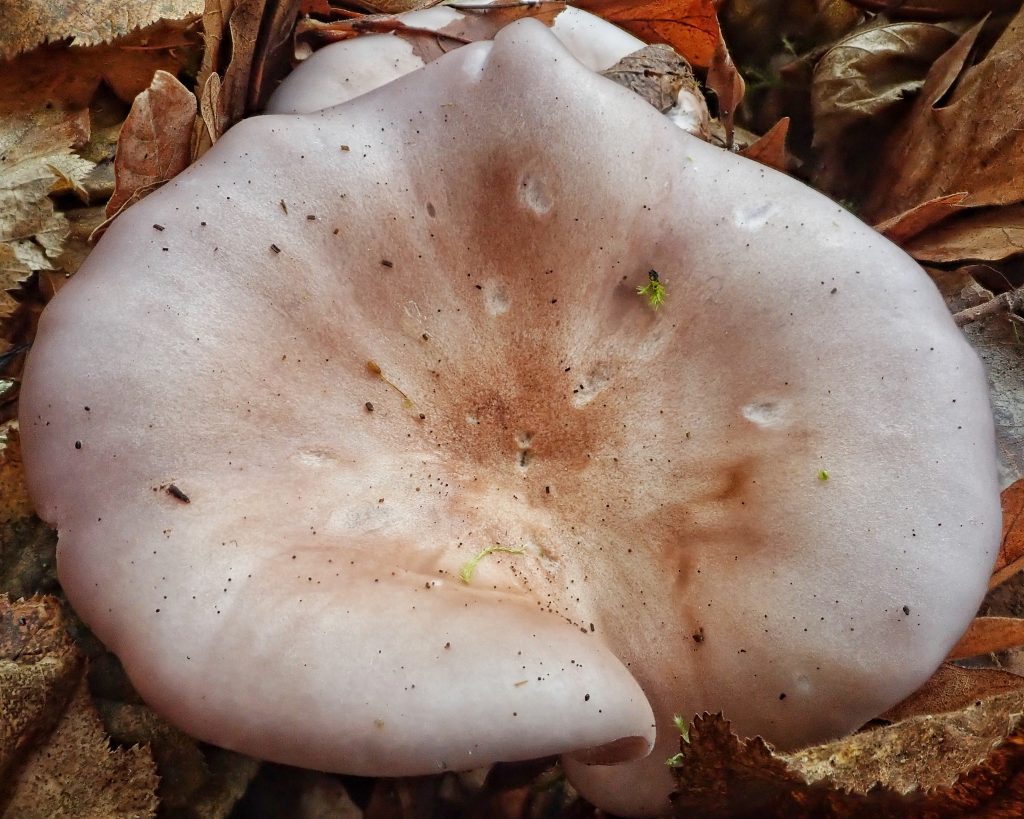
https://www.mushroomexpert.com/clitocybe_nuda.html
https://www.mykoweb.com/CAF/species/Clitocybe_nuda.html
https://etd.auburn.edu/bitstream/handle/10415/3297/Liang%20Bo’s%20Thesis.pdf?sequence=2&isAllowed=y
https://www.first-nature.com/fungi/lepista-nuda.php#identification
https://www.centraltexasmycology.org/blog/2021/1/26/identifying-blewits-an-cortinarius-look-a-like
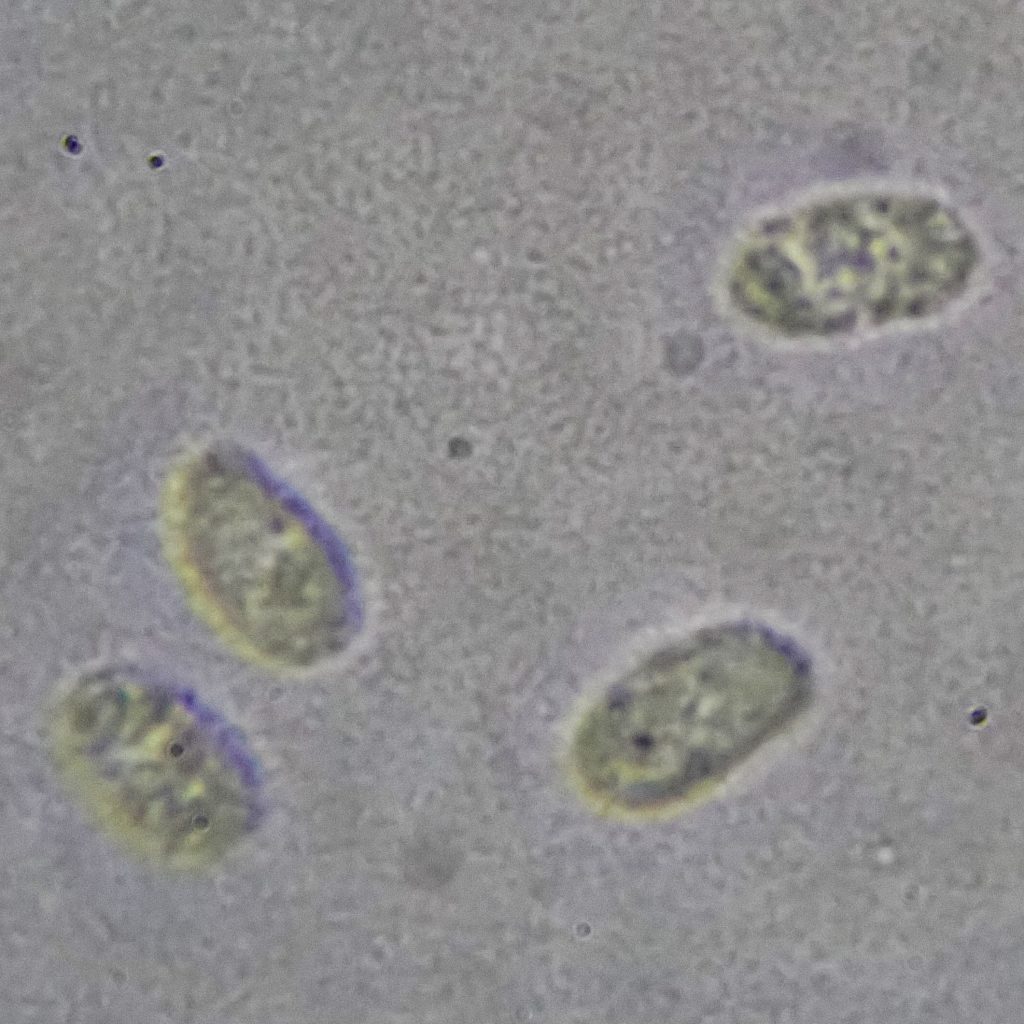
Very cool! Thank you ☺️
So do mushrooms all have bugs inside the gills?
Thinking of my non-English speaking Ukrainian neighbor who liked a particular mushroom I’d gleaned from the west side of the fort at Ft. Vancouver. It was a button type, white mushroom. She didn’t want the flat headed, darker mushrooms.
Afterwards, that night, all night, I worried that I might have accidentally poisoned her!
I watched closely for her to come outside the next day. She did. Robustly navigating her walker as ever. “Whew!” Deep sigh of relief. I love my immigrant neighbors, and they love me. I won’t be giving out mushrooms again however.
I glean them this time of year and throw on my gardens. I call it mushroom composting. Then I collect the autumn fallen leaves and cover the gardens, and top dress with a thin layer of aged steer manure, to mostly hold the leaves in place until the rains weight them down. It all breaks down over the winter, so I don’t fuss with it. It’s black gold by May.
Loving on lichens, and all the rest of your flora & fauna passions.
I’m teaching our resident gardeners about the vital, interrelated ecosystems of insects, fungi, birds, all pollinators, leaf mulching, to our gardening.
Mgmt has sprayed different chemicals here since I’ve lived here, 9 years. Toxic, toxic, toxic! To us too!
Almost 7 acres here, and 70 garden plots for residents. Can’t imagine how damaged the soil and ground water! Poor insects, birds, and other fauna, residents’ dogs, and us!
Trying to change it gradually, without ruffling mgmt’s feathers too much. Educating other gardeners is key.
Thank you for your passion work. I’ll be posting to our fb pages for residents.
Sounds like you are passionate yourself! There are probably bugs on and in almost every wild mushroom. Thanks for your comment!